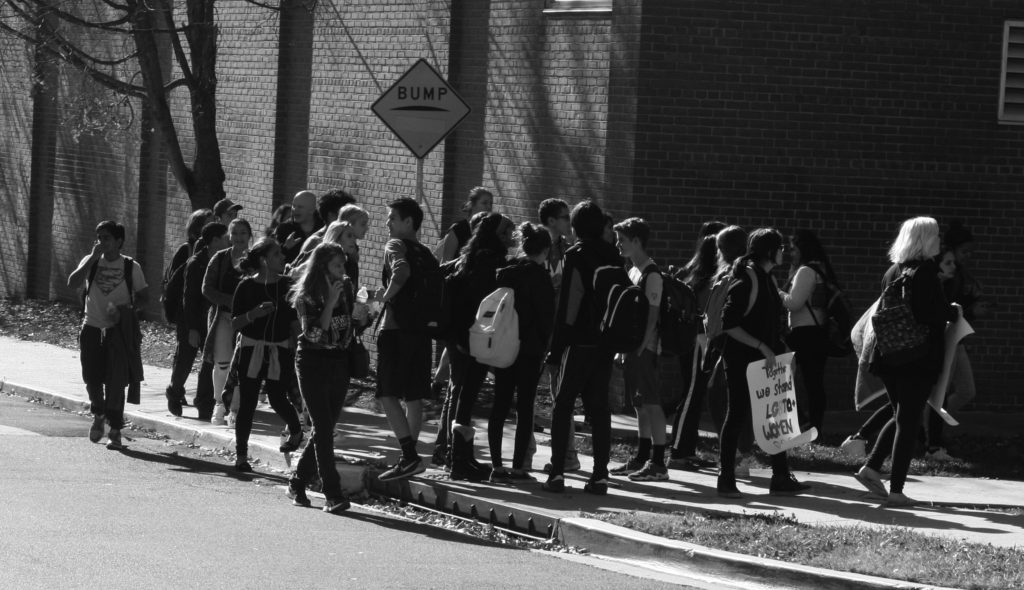As Students Protested, MCPS Struggled To Balance Rights and Safety

by Jonathan Chang ‘17
Students in MCPS, angered by the results of a contentious presidential election, protest- ed and engaged in walkouts in mid-November. MCPS Superintendent Jack Smith initially framed students’ rights to assemble and speak, but after a student was assaulted at a protest at Richard Montgomery on November 16, Smith reversed his statement and asked students to not protest and to stay in school. Similarly, attempts were made at Sherwood to dissuade students from protesting without the principal’s prior approval.
Protests began at Blair with over 500 students walking out of class and off campus on November 14; many students live streamed the event. Later in the same week, schools such as Richard Montgomery, Blake, Paint Branch, Springbrook, Gaithersburg, and Sherwood followed suit. MCPS policy allows students to assemble, but also states that they have a responsibility to consult the principal when planning any assembly.
After the assault of a student at Richard Montgomery, Smith released a new statement against the protests in a video that all MCPS schools were required to
show students on November 17. Citing safety concerns, Smith asked all students to not engage in protests. “If students do not comply with these expectations they may be subjected to … disciplinary actions,” said Smith.
Smith’s message was broad- cast to Sherwood during Advisory. This occurred at a time when rumors spread about stu- dents having their own protest at Sherwood in a similar fashion to Blair’s protest. However, despite his message against it and a subsequent message by SGA vice-president Caitlin Deerin against it, many students still participated in the unsanctioned pro- test during lunch on November 18.
Around 200 students were- outside Sherwood, with most converging along the front of the school. Students walked or marched in groups, while others held signs and chanted various phrases supporting Clinton or Trump. While the protest was generally peaceful with no re- ported injuries, there was still tension as many supporters of the opposing parties chanted against each other, and some confrontations occurred between students. Administration responded swiftly as Principal Bill Gregory, upon hearing about the walkout, immediately mobilized administrators, security, and staff to monitor the protest. Four police cars were present as of cars stood by and watched over the event, but the protest eventually died down be- fore the lunch period ended. No disciplinary action was taken on students who participated in the protest; however, those who did walk off campus received an un- excused absence.
Following the protest, an announcement by Deerin was made about a school-sanctioned unity demonstration by students on
November 21. This demonstration was planned by senior Lydia Velazquez, who met with Gregory and Deerin to discuss and organize the event. “We want- ed a peaceful alternative [to the protests] … and it brought about good discussion [about student’s feelings],” said Deerin. Though it was originally planned as a “ eld day” around the stadium, a lack of time to plan and cold weather forced them to revise it into a poster hung in the main of hallway where students could post positive messages.
Messages included ones of unity such as “We stand together,” but joke messages were made such as “study” and serious messages like “#not my president” as well.
Some students were dissatisfied with how the sanctioned event went from a supposedly massive gathering where students could voice their opinions to a relatively small poster. “They basically tried to shut us down … telling students to write positive things and taking [messages] down [that weren’t positive],” said junior Eyuel Birhanu.